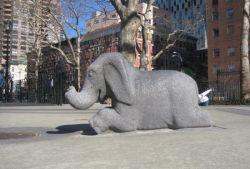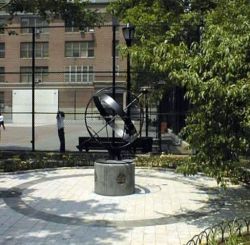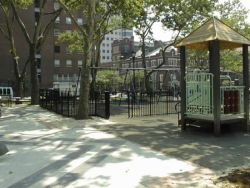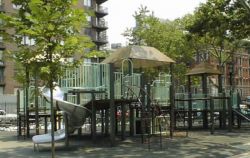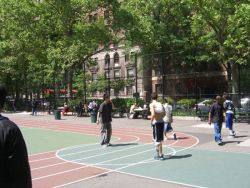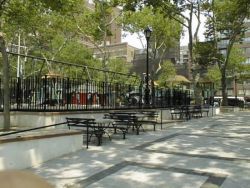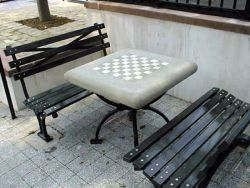St. Catherine's Park
St. Catherine’s Park
Both St. Catherine’s Park and the nearby church were named for Saint Catherine of Siena (1347-1380). St. Catherine was widely respected for her devotion to the poor and sick and for her incessant zealous labor. The youngest daughter in a large family, she lost many of her brothers and sisters in various plagues and thus gained a great appreciation for life and curing the sick. Eventually this dedication was recognized and she was named patron saint of those who heal the sick. Involved in public affairs, she was instrumental in returning the papacy from Avignon to Rome. She was commonly known for her visions of spiritual encounters with Christ, the most noted being when she saw Christ and herself engage in matrimony.
Across 68th Street and east toward York Avenue stands the park’s namesake, St. Catherine of Siena Church, founded in 1897, just ten years before the parkland was acquired. The church was originally built to serve the largely Irish community on the Upper East Side. A parochial school was established in 1906 in the basement of the church. A new era for the church came in 1932 when hospitals were built in the neighborhood and the church began to serve patients and staff.
The property for St. Catherine’s Park was purchased by the city of New York in February 1907 for use as a public playground. In 1914, it came under jurisdiction of the Parks Department and was given its current name by the Board of Aldermen in 1918. Originally built in 1917, the park was redesigned by the Parks Department in 1941 and reconstructed the same year by the Works Progress Administration. All that remains from the 1941 renovations are the flagpole, public restroom, and sycamore trees. A cement perimeter wall constructed in 1971 was removed when the park was renovated in 1988.
In 1996 $510,000 in funds was allocated by Council Member Charles Millard for the reconstruction of St. Catherine’s Park. An additional $618,000 has been appropriated by Council Member A. Gifford Miller. The current design is largely modeled after the Florentine floor pattern of Santa Maria sopra Minerva (1280) in Rome, where the body of St. Catherine of Siena rests.
The spray shower area stands in for the center aisle, leading to what would be the altar where the flagpole stands. The play areas to each side represent the pews, and the paving pattern throughout the park resembles the actual floor of the church in Rome. The elephant spray shower makes reference to Bernini’s sculpture of an elephant that supports a 6th-century Egyptian obelisk and stands outside the church. Because St. Catherine was often depicted holding a lily, a symbol of new life, lilies have been planted throughout, symbolizing the rejuvenation of the park. St. Catherine’s Park not only has a long history within the neighborhood, but also has religious and art historical associations that live on in the subtle park design.
Check out your park's Vital Signs
Clean & Safe
Green & Resilient
Empowered & Engaged Users
Share your feedback or learn more about how this park is part of a
Vital Park System

